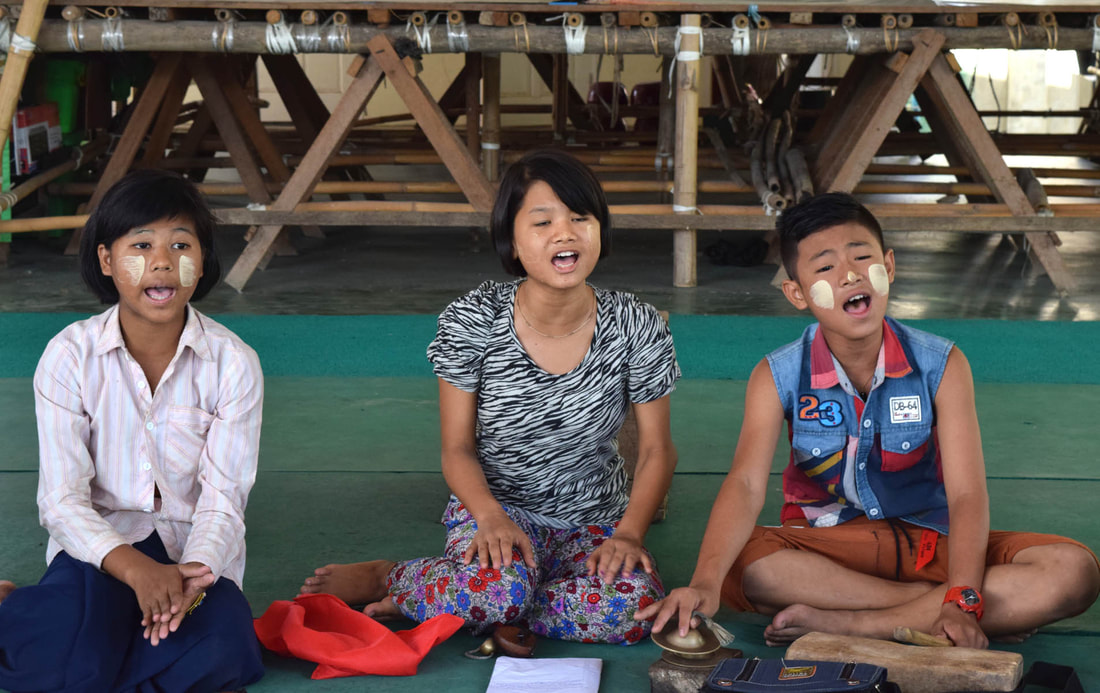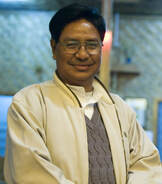Inwa School of Performing Arts
Why we Need an Arts School
By U Ohn Maung, General Manager and Director, Mintha Theater
"The true arts from the olden times included messages and a great deal of meaning...
We risk more than just entertainment...We should make it possible for our young people to
follow in their ancestors’ footsteps."
In Myanmar going back as far as we know, there were many beautiful and meaningful dances representing Myanmar. In the old days, there was no formal system of arts education. Those who wanted to learn the arts would go and stay with a teacher, and serve the teacher in any way they could - fetch water and cut firewood. They used to stay about three years.
In the early 1950’s, senior artists and government cooperated to found the Pantra state school of drama and music. The purpose was to create and document a standard curriculum in the performing arts. Until about 10 years ago, the students at the Pantra did not need a high school education. If they could read and write and had talent, they would be admitted.
Students at that age are easy to teach because they are flexible, can fold their hands, and can bend around the waist easily. They listen to the teacher and are not shy or easily distracted, so they learn dance fast and well. Students were well-qualified because they studied performance for a full three years. They also had government stipends and subsidized housing. Managers from the commercial Zat and A-nyeint Pwes came to the graduation ceremonies to choose the students to hire into their troupes.
The Pantra remains an important asset to the country, but policies have changed in important ways. The Pantra now accepts students in grade seven, when they are a little older, shyer, and less flexible (in Burmese: “their bones are a little bit old.”) Students get a standard high school education for half a day, and so they get the equivalent of just one and a half years of arts education.
One problem is simply capacity. If eager and talented students are not chosen by the Pantra school, what can they do? The only option is to try to go into Zat Pwe or A-nyeint Pwe without training. Some have native talent as performers and succeed.
The result is that the quality of Zat Pwe and A-nyeint Pwe is degrading noticeably. The true arts from the olden times included messages and a great deal of meaning. It takes a good teacher and time to understand how to perform them. There is a well-known saying from the past: “When the Zat Pwe troupe performs, the audience is left with some new knowledge", but now, I fear, they are being left with nothing.
Some troupes still perform the ancient dances like the Aphyodaw (introductory female solo) and Nat Gadaw (spirit wife), but many don't even try anymore. These ancient classical dances are at the very center of the Myanmar tradition, but I fear they will soon disappear from most shows entirely. Troupes are now mixing the beautiful costumes of the classical dances with Western music, but without the dancers knowing the real classical dances or their significance.
In effect, when the performers no longer have a traditional education, the Zat Pwe ends up weakening the Myanmar arts. When Western rock, pop, and hip-hop occupy more than half night, the Pwe teaches our next generation that Western style singing is our Myanmar culture.
It is no longer realistic that the Pantra alone can rescue our Myanmar arts. We need to have greater resources and we need to teach at multiple levels. We should work together with those who love Myanmar culture. We should make it possible for our young people, who have the desire, to follow in their ancestors’ footsteps. If we raise our capacity to educate our young people in the arts, the benefits will resonate far and wide, as in the past.
If we cannot better support education and rescue our Myanmar arts, we risk losing more than just entertainment. For many centuries we have depended on our dancers and musicians to be at the very center of our ceremonies and traditions. If we lose our Myanmar culture what shall we do at the pagoda festival, the monks funeral, or the novation ceremony? If we lose our culture, what will we have to offer people from other countries? And what will we have to exchange with the world?
-- U Ohn Maung, March, 2014---
Meet Inwa School Leaders...



